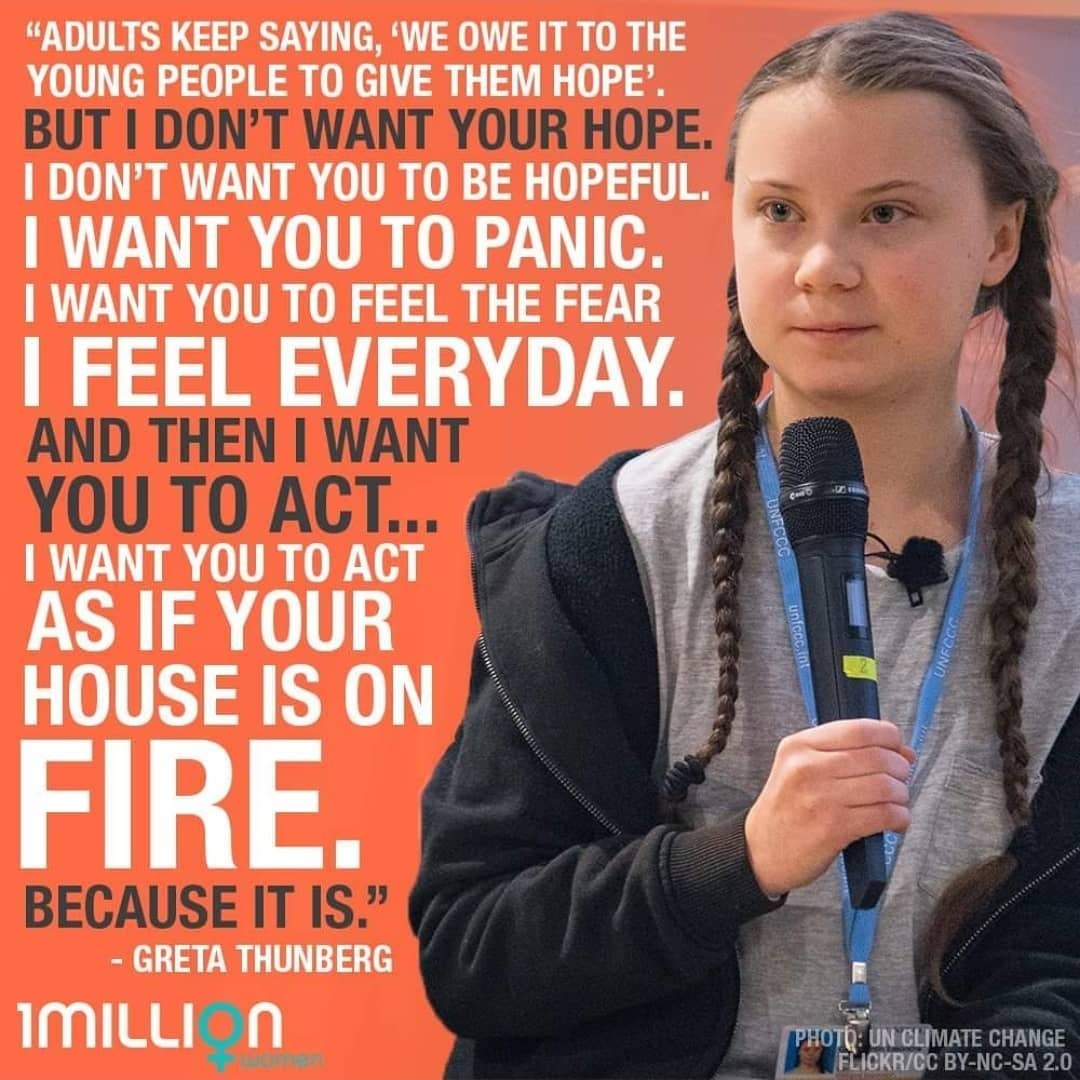April 21, 2019 The Unitarian Society, East Brunswick, New Jersey
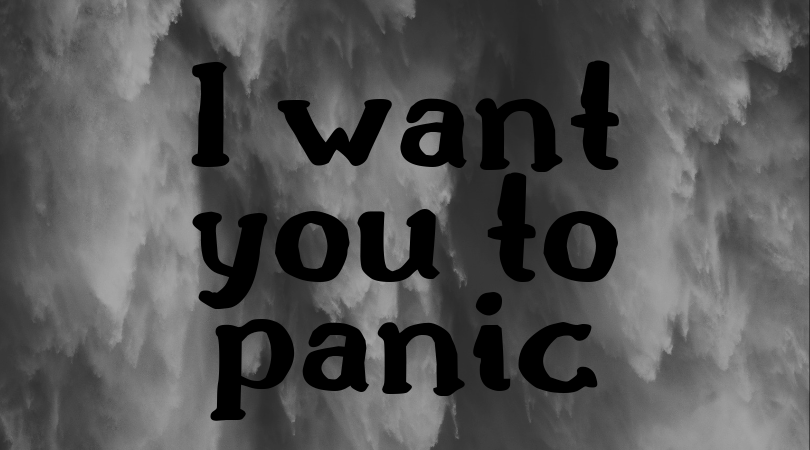
Not my words, but I stand here before you to amplify them.
I want you to see the faces of our current leaders. Our real leaders. Not presidents and prime ministers, or CEOs of world-wide corporations. I want you to see not future leaders, but current leaders, leading us right now.
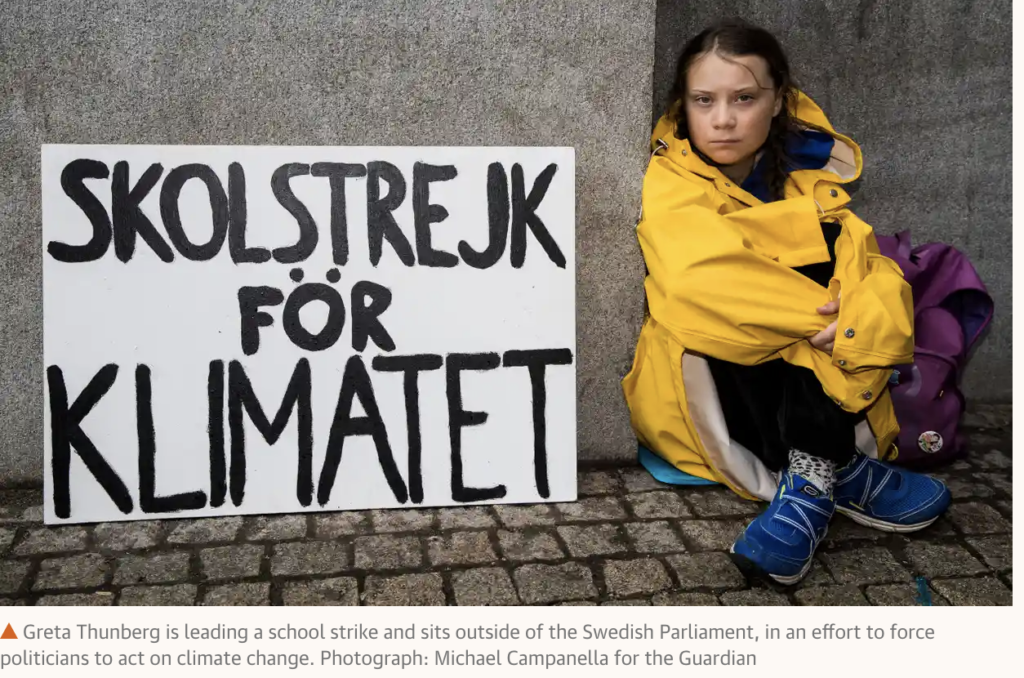
Greta Thunberg, whose TED talk you just heard, and whose Twitter Feed describes her as “16-year-old climate activist with Asperger,” who began striking for the climate last August by not attending school on Fridays, launching a global movement.

13-year-old Alexandria Villaseñor, who strikes outside the United Nations every Friday and has done so since mid-December.
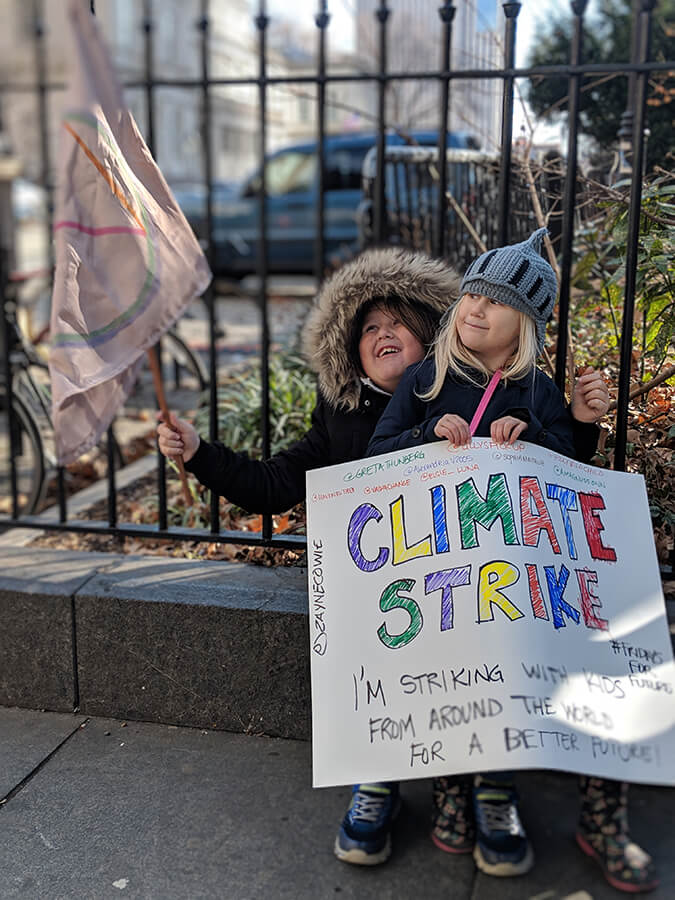
Zayne Cowie, whose book we heard earlier, which he co-wrote with some help. He’s been a regular climate striker outside City Hall in New York. I think he’s 9.

Nadia Nazar, co-founder along with Jamie Margolin and Madelaine Tew, of Zero Hour – all of whom at the ages of 16 co-founded Zero Hour, a youth climate activist group based out of Baltimore.
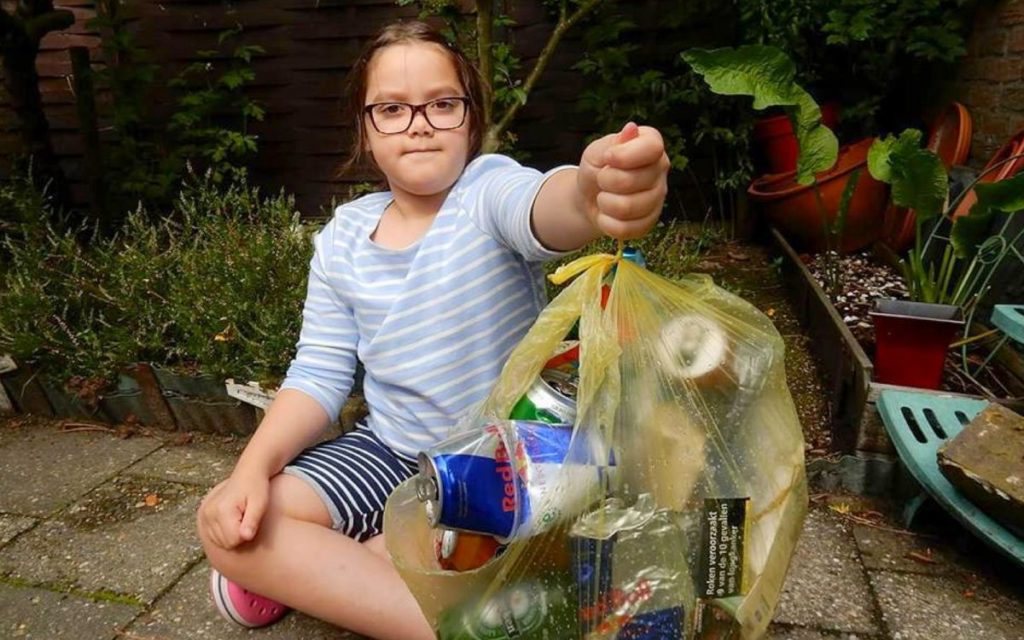
Here is Lilly Platt of Holland. Since the age of eight years, she was involved in cleaning up plastic pollution. At the age of ten, she heard about Greta and her strike, and immediately began striking too.

This crew of young people is known as Juliana et al v. United States, 21 young people who filed a lawsuit in 2015, asserting that the government has violated the youths’ rights by encouraging and allowing activities that negatively impact the climate, such that it significantly harms their right to life and liberty.
It is not just these young individuals and small groups, but whole youth and young adult movements emerging: Zero Hour as I mentioned before, the Sunrise Movement, and Extinction Rebellion, where just this past week 63 people were arrested outside City Hall in New York and arrests in London for acts of civil disobedience this week are approaching nearly one thousand.
They are living into the truth of this aphorism, attributed to our Unitarian forbear, Edward Everett Hale, echoing ancient Talmudic wisdom:

Are the words of 16-year-old Greta Thunberg’s TED talk still echoing in your ears? Making your heart both soar with inspiration and sore with the challenge she lays leaden at our feet?
There are losses that cannot be reversed or retrieved. This is our heart-breaking legacy.
Yet, it is within our means to prevent still greater losses. There is no time to lose in starting or growing the deeply-rooted, radical transformation necessary.
This morning, I bring you no scientific facts about climate change. There are other sources for that. Outside on our frontage we already declare to our larger community that “Climate Change is Real!” Rather than provide facts, I am here to PREACH.
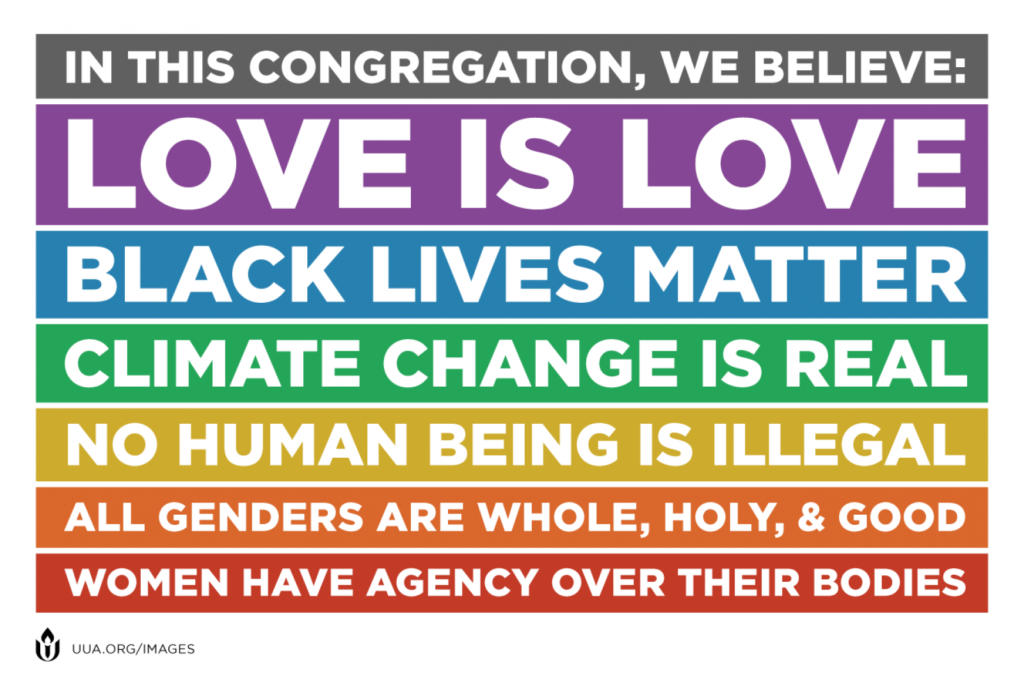
Some say it is the preacher’s role to preach hope. Others say the preacher’s role is to comfort the afflicted and afflict the comfortable, so there’s that. You can let me know which (or both) this ends up being for you.
When it comes to climate change, climate changeD, climate chaos, climate constriction, climate collapse…whatever you call it — preaching hope is not a straight-forward thing. It’s there; hope is still there. It’s just not in the shape you expect. It doesn’t feel good or comforting. It doesn’t smile at you or speak softly in your ear or make you laugh with joy.
Hope comes as resilience in reckoning with our utter vulnerability. Hope comes in being able to watch the horrifying images of what has been lost alongside the beautiful ones of this majestic, corrupted world. Hope comes from being able to face our own complicity, coming to terms with what we must give up. As we heard Greta Thunberg tell us, hope comes in the shape of action.
At this point, hope does not mean reversal. It might mean mitigation. It definitely means adaptation.
Hope takes the shape of youth climate activists – like Greta, like the others whose pictures I have shown, like local ones – Eden Summerlin who is a Unitarian Universalist from the Morristown congregation; like Rachel Gurevich, a 14-year-old who lives here in East Brunswick, both of whom organized a climate strike and rally on March 15, as part of the global movement to get adults in power to up our game.
I spoke with Rachel recently — I haven’t met her (yet). She wants you to know what the youth are up to. She hopes you will come out to the next climate strike rally that they are in the midst of planning — not to take over, they are doing just fine without us adults — but to be there in solidarity, to be there to amplify their voices.
In January of this year – just three months ago – Greta Thunberg addressed the World Economic Forum in Davos, Switzerland. In a speech called “Our House is on Fire,” she said,
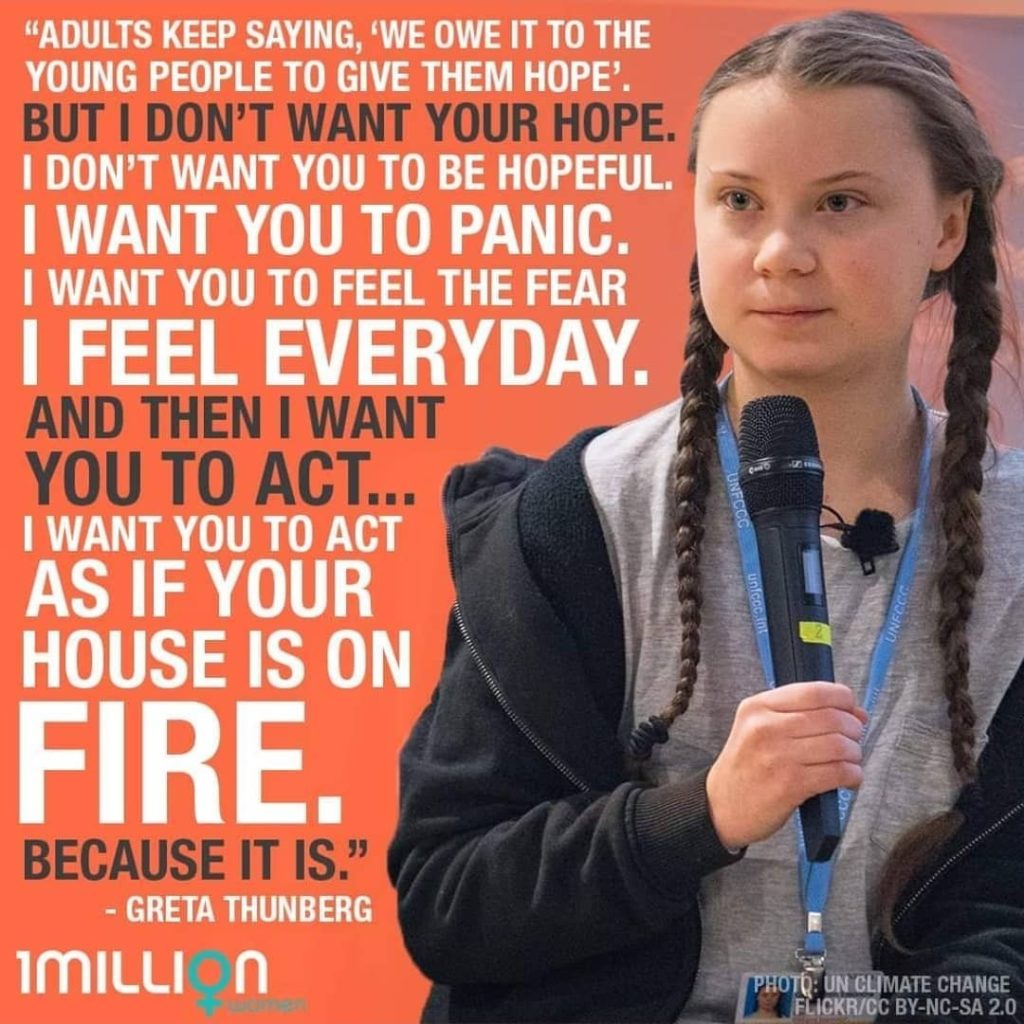
Too often I feel as if I am home, watching television reporting that my house is on fire. My response? I walk over to the window and wave at the fire fighters who are trying to put it out. It’s absurd, when you think about it. Yet I recognize myself in this analogy, and wonder if some part of you might recognize yourself, too? I’m there, waving at the fire fighters, not really taking in that it’s my house on fire; acting like it’s some random other person’s house on the television, far away, that is on fire. (Thank you to my colleague, Rev. Sara Goodman, for this metaphor.)
This stuff is hard. Some of us choose to not go to deep into the bad news, because it’s so heavy, so despairing. I’m guessing most of us do small dives into the information by choice or we can’t avoid it. Some of us might do deep dives, becoming paralyzed by what we learn there, or try to use dissociation as a strategy so that our minds can try to comprehend it but we don’t feel the feelings – the fear, the terror.
Rather than dissociating from the terror of extinction, we can choose to rebel against extinction but we must create safe and brave spaces where we can experience the fear and terror, acknowledge it in more than intellectual ways, work through it, and come out the other side, learning resilience, as part of our preparations to do the necessary work of adaptation to the new planet we have made. In the fall, when I preached on this, I called them Islands of Sanity (a term borrowed from Margaret Wheatley).
These places must have singing in them, I think. And laughter, like the poet and Mad Farmer, Wendell Berry says, for when we are expecting the end of the world.
We can give them all the pretty names, but that does not matter if we do not create these spaces and places of adaptation.
The words from Rebecca Solnit for our chalice lighting today spoke of hope that comes from “small groups that seem at the outset unrealistic in their ambition” yet shape possibilities that come to fruition – the fall of the Soviet Union, for example. This is not just poetic or philosophical or anecdotal. The research of Dr. Erica Chenowith, political scientist at Harvard’s Kennedy School, tells us that for a peaceful mass movement to succeed, all we need is 3.5% of the population to come together, to mobilize, to join forces, in order to shift habits as entrenched as our abuse of the planet and her natural resources.
Today is not only Earth Day, it is Easter, which we celebrated in our Sanctuary Garden at an early service this morning. Like our call to worship which hearkened us to rise, Easter is a holiday that celebrates rising again, rebirth, and as I preached in the garden, in the spirit of poet Wendell Berry, to practice resurrection. Might we try that? Do we have any choice?
As we bring together our voices in a chant that was sung at the March Strike 4 Climate event in Morristown, let us let echo in our ears and hearts these at once exhilarating and daunting words from Greta Thunberg:
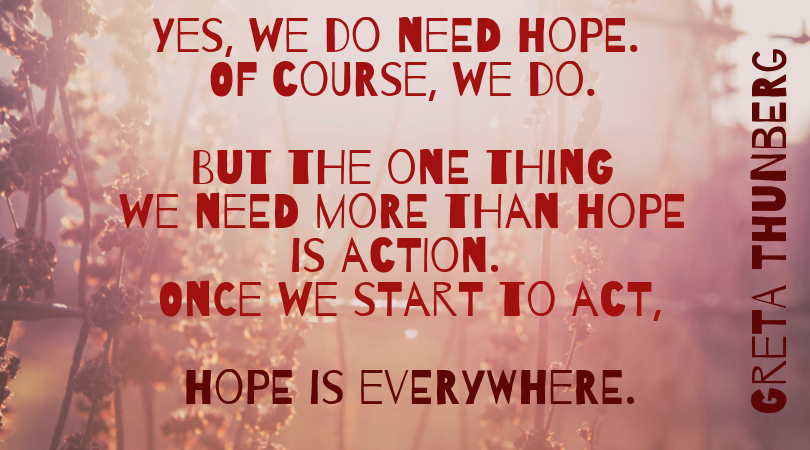
Amen. Blessed be.
** With deep gratitude to Sarah Metcalf, who presented as part of a team a worship service on climate change at the Unitarian Society of Northampton and Florence and who shared her presentation with me, that mine might be inspired by her knowledge and dedication to this issue.
